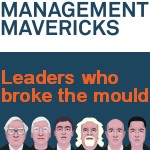98.7% Of all customers recommend us, we're so confident about our results we publish all reviews and stats
View Live Stats View Reviews
 Strategic Resource Management Excellence
Strategic Resource Management Excellence
Face to face / Online public schedule & onsite training. Restaurant lunch included at STL venues.
From £495 List price £650
- 1 day Instructor-led workshop
- Courses never cancelled
- Restaurant lunch
Syllabus
Who is this course for?
This one-day workshop is designed for senior executives, operations managers, and project managers seeking practical insights into resource management.
Whether you're responsible for strategy development or aiming to enhance your risk management skills, this course provides valuable knowledge applicable to various business contexts.

Benefits
By participating in this workshop, you'll gain a deeper understanding of effective resource allocation and risk management.You'll learn how to navigate internal resource dynamics, develop resilience within your operations strategy, and adapt to changes and uncertainties.
Join us to elevate your resource management capabilities and enhance your strategic decision-making.
Course Syllabus
Understanding Internal Resources Dynamics
Explore the key dynamics of financial, time, and human resources within an organisation.
Identify resource allocation challenges and opportunities.
Case studies and practical exercises.
Effective Risk Management
Assess risk factors affecting resource allocation.
Develop risk mitigation strategies.
Group discussions and scenario analysis.
Building Resilience in Operations Strategy
Understand the concept of resilience and its role in organisational success.
Strategies for adapting to changes, disruptions, and uncertainties.
Real-world examples and best practices.
Workshop and Interactive Exercises
Apply resource management principles to case scenarios.
Collaborate with peers to develop resilient strategies.
Q&A session and group feedback.
Action Planning
Create a tangible action plan with next steps
Prices & Dates
What you get
"What do I get on the day?"
Arguably, the most experienced and highest motivated trainers.
Face-to-face training
Training is held in our modern, comfortable, air-conditioned suites.
Lunch, breaks and timing
A hot lunch is provided at local restaurants near our venues:
- Bloomsbury
- Limehouse
Courses start at 9:30am.
Please aim to be with us for 9:15am.
Browse the sample menus and view joining information (how to get to our venues).
Refreshments
Available throughout the day:
- Hot beverages
- Clean, filtered water
- Biscuits
Online training
Regular breaks throughout the day.
Learning tools
In-course handbook
Contains unit objectives, exercises and space to write notes
24 months access to trainers
Your questions answered on our support forum.
Training formats & Services
Training Formats & Services
|
Learning & Development Resources
Soft Skills Blog
- 3 Case Studies of Successful Strategy
- 6 Proven Steps to Implement Organisational Change
- How to Build your Resilience Under Pressure
Infographics
Training manual sample
Below are some extracts from our Strategic Resource Management Excellence manual.
Good resource management is about balancing
the use of time, money, and human skills to achieve goals effectively. By
planning, allocating, prioritising, optimising, monitoring, staying flexible,
and evaluating, you can ensure that resources are used in the most productive
way possible. Each principle interlinks to help create a robust framework for
managing resources efficiently.
1. Planning
Principle: Effective
resource management starts with thorough planning. This involves identifying
the resources needed, setting objectives, and developing a plan to achieve
those objectives.
Example: Imagine
you are planning a project to build a website. You would need to identify
resources such as web developers, designers, content writers, and budget. You’d
set goals for the project’s completion date, features, and budget limits.
2. Allocation
Principle: Allocate
resources based on their availability and the needs of the project or task.
Ensure that resources are assigned in a way that maximises efficiency and
productivity.
Example: In a
manufacturing plant, you might allocate workers to different shifts based on
demand forecasts. If you anticipate high production during certain hours, you
allocate more workers to those shifts.
3. Prioritisation
Principle: Prioritise
resources and tasks to focus on the most critical aspects first. This ensures
that essential tasks are completed on time and that resources are used
effectively.
Example: In a
software development project, you might prioritise developing core
functionalities first, such as user authentication and database integration,
before working on additional features like a user feedback system.
4. Optimisation
Principle: Optimise
the use of resources to reduce waste and increase efficiency. This involves
streamlining processes, reducing redundancies, and finding ways to make better
use of available resources.
Example: A retail
store might use software to track inventory levels in real-time, reducing
overstock and stockouts, thereby optimising the use of warehouse space and
minimising costs.
5. Monitoring
and Control
Principle:
Continuously monitor the use of resources and adjust plans as necessary. This
helps in identifying issues early and making informed decisions to keep the
project on track.
Example: In a
construction project, using project management software to track progress,
costs, and resource usage can help you identify delays or budget overruns,
allowing you to take corrective action promptly.
6. Flexibility
Principle: Maintain
flexibility to adapt to changes and unexpected challenges. This involves having
contingency plans and being able to reallocate resources as needed.
Example: In event
planning, you might have backup vendors for key services like catering and
entertainment. If one vendor faces issues, you can quickly switch to an
alternative without significantly impacting the event.
7. Evaluation
and Feedback
Principle: After
completing a project or task, evaluate the resource management process and
gather feedback to improve future planning and allocation.
Example: After a
marketing campaign, analyse the ROI of different advertising channels. Use
insights gained to adjust future campaigns, such as investing more in digital
ads if they proved more effective.
Thanks. Your download will begin shortly.
Please help us
Share or create a link to this manual today!
Just follow these simple instructions...








